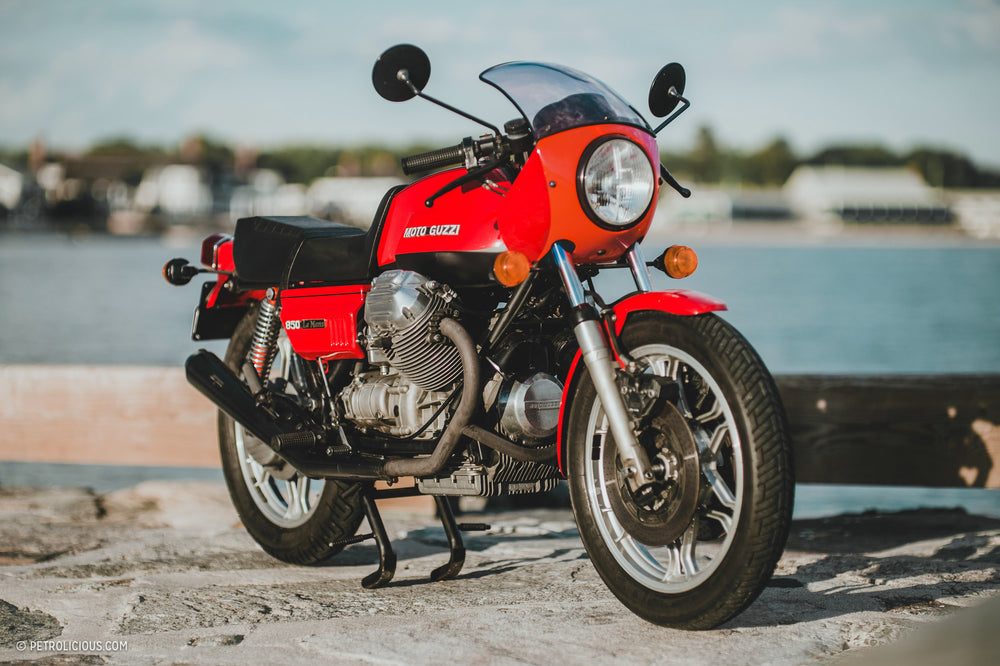The nationality adjective "Italian" is unique in the sense that it has the most broad-based range of examples to define it, much more than any other country. Put it this way: the connotations of “French” can include a bicycle with a baguette in the basket, or else maybe a little street-side Parisian cafe where said bicycle is leaning against a wrought iron table that charmingly wobbles on the cobblestones. For “English,” this could be Big Ben chiming 1 o’clock in the fog, or Big Ben chiming 2 o’clock in the heavier fog. What I mean is that the distilled ideas of these places (in many peoples’ minds anyway) are pretty much going to converge around a particular kind of tableau. This is not the case with “Italian.”


For examples of this pertaining to our interests, the name can conjure a creaky Venetian gondola being guided through the canals, propelled by the Gondolier singing "O sole mio” as you meander among the vast provenance of culture, or it can provide the mental scene of a gleaming Riva Aquarama with twin Lamborghini V12s singing their own tune as it streaks across Lake Como, forming scowls and smiles alike on the on-shore faces that cannot help but become part of the event. Another example of the dichotomy: a vintage Nuovo 500, or a Ferrari 375 Plus. I think you get the picture; the former soothes the soul and the latter stirs it. But here's one more: A Vespa scooter and mid-70s Italian superbikes!






Motorcycles manufactured by MV Agusta, Ducati, Laverda, Moto Guzzi, Gilera, Mondial, et all, all share a rich history of racing in their Italian blood. Most notable of course being MV Agusta, with its sensational winning streak in the big GP classes. In the mid-70s, MV, Moto Guzzi, Laverda, and Ducati built big-bore, mostly race bikes, but they were called street machines all the same, and they collectively stunned the motorcycle world at the time, and still today for that matter. Along with their nosebleed prices, their paint jobs, swept fairings, barely-muffled pipes, clip-ons, and filterless Dell'Orto carbs, they projected a presence that many in the press found "lurid" as the best word to get the point across.
One such example of the bikes profiled above is the focus of this piece: a 1976 Moto Guzzi 850 Le Mans. With its shaft drive and rugged pushrod engine, it was the least exotic of the bunch, especially compared to the skeletal Ducati with its overtly complex valve actuation. But, all the same, the Le Mans’ performance was right up there with the rest. And you can do maintenance on the side of the road. Its frame was designed by the eminently capable Lino Tonti, and was one that allowed its top structure to nestle low inside the “V” of the longitudinal V-Twin motor. The overall height of the bike was the lowest of the bunch as a result, and its styling—which was capped off with a daintily sized, but handsomely styled fairing—gave it an undeniable presence even among its beloved peers.



Maybe a locomotive isn't a favorable comparison to a race-bred bike like this, but its boxy, long, low, and muscular stance made it a fitting one I think. This bike absolutely looked the business. The extensive external webbing on the engine block and transmission, the alloy wheels, and large, uniquely-linked triple-disc brakes added to that aura provided by the overall form. As mentioned earlier, the Guzzi's performance left nothing to be desired when compared with its superbike contemporaries; deft handling and 130 mph capabilities were what it was about. On the throttle, the intake sound of the 36mm Dell'Ortos' velocity stacks, aggressive cam, big valves, high compression pistons, and a level of exhaust muffling that can generously be called “some,” all worked together to make the definition of Italian opera more confusing; is it this thing you are riding or one of the country's more notable Tenors?
One might find that last sentence sacrilegious; of course, the aural awe of Italian opera can bring one to tears. But, so can a lot of things Italian, not the least of which are its machinario, which includes the 850 Le Mans. All of these things make Italy a uniquely enthralling country, but what best exemplifies "Italian" remains elusive, and that’s not so bad, is it?



























































